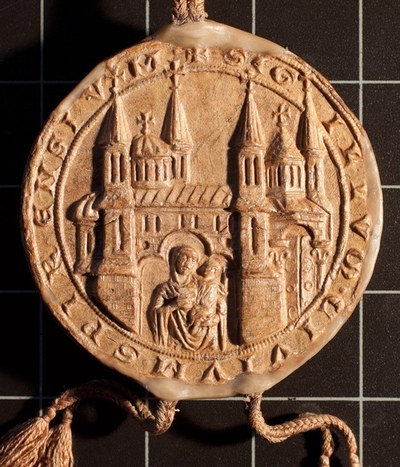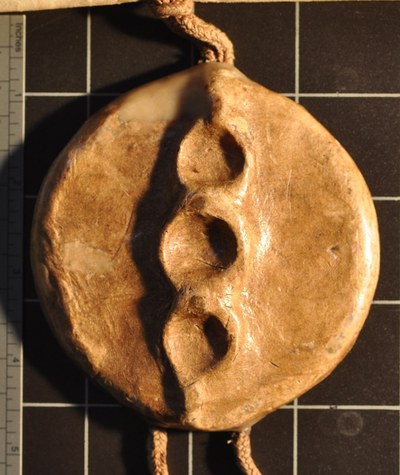Forming and Representing Identity. Corporative Seals in the Late Middle Ages
Completed Postdoctoral Project (Habilitation) by Prof. Dr. Markus Späth


Prior to that, the seal had been, in its ancient tradition, a tool for legal authentication exclusively reserved for an individual person and, through use of a matrix, reproducible for any given occasion. Stereotypical image forms indicating social rank developed in the early Middle Ages. Individuals used the seals to represent their social identity in society. With the advent of new, corporative seal bearers old image conventions of the medium seemed overhauled, thus new ones evolved.
Since transpersonal corporations could potentially exist permanently, many of them reproduced their seals for centuries. For each sealing procedure an increasingly ageing stamp was used on a new surface made from soft material, mostly wax. This produced new medial connections: varying counterseals or intentional indentations of of the human body such as fingertips, but also variations in the colour and shape of the wax corpus. The study of these century-long stories of impression of corporative seals reveals continuities and fractures in their imagery which are at the core of contemporary visual studies debates.
Therefore, the project investigated corporative seals from a decidedly art-historical perspective and a visual studies viewpoint. Previously, this was predominantly done by historians and their auxiliary branch sphragistics. Comparative analysis of seals from various corporative milieus of Northwestern Europe during the late middle ages (13th until 15th century) illustrates the constitution of a specific imagery between the complementary poles of iconography, mediality and materiality used to construct corporative identity concepts of groups as well as to represent them to the outside world.
This project was funded by a Dilthey-Fellowship from the Volkswagen Foundation, 2008 – 2015. 
